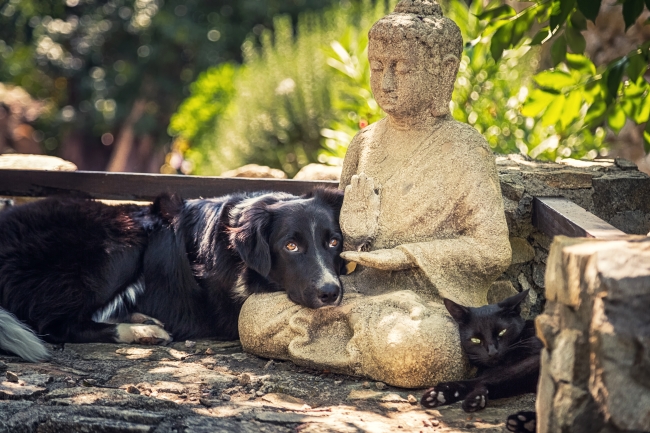
Are all pets created equal? Apparently not. Rescue home workers, shelter employees, groomers and veterinarians have observed a serious decline in the desirability of black-coated animals.
Whatever the reason for this current decline in popularity for black-colored pets, we must first acknowledge that neither history nor art have reflected positively about black-colored animals. In centuries past, black cats have faced their own share of troubles (dating back to the Dark Ages when they were believed to be evil, or possessed by wicked spirits), routinely being killed or run out of town by superstitious villagers. Stories like “The Hound of Baskervilles,” and movies like “The Omen” all depict the black dog as a menacing creature, and often the black cat as a witch’s companion, or a creature of bad luck. Even Sir Winston Churchill describe his depression as a “black dog” that would follow him.
Though these ideas are familiar to us, how is it that they have any bearing on what kind of pets people choose today? In this modern society, what is the reason for a color preference? Some believe that people might be instinctively afraid of dark-colored animals, or that pet-owners are just fed up with having black fur on their pant legs, couch cushions and blankets. While these reasons might certainly be a factor for various individuals, there is another reason that seems more likely.
Social Media’s Influence
In the last ten years, social media has shot through the roof through platforms such as Facebook, Twitter, Instagram, and Pinterest. People are constantly publishing photos about the events in their daily lives, often including the entertaining antics, poses and behaviors of their beloved pets.
Some users have experienced such successful followings for their animals, that those looking for an ever-expanding audience, might prefer a horse of a different color (pun intended). Why might this be? Sadly, the trend may be due to the fact that black animals don’t photograph or film as well as pets of other colors.
That’s the general consensus. Even on the most impressive and updated mobile devices, the features of black cats and dogs are disappointingly less-pronounced. Unless the lighting is overexposed, it can be hard to see the beautiful eyes, and wavy texture of fur on some of the dogs and cats. What appears as an endearing expression to you, might not be as obvious on the Instagram feed. Even though thus might not seem like a big enough issue to effect statistics in pet adoptions, it actually does. In this audience-seeking online world, black pets just can’t compete with animals of other colors.
Because darker dogs may not film as clearly as others, rescue homes and pet shelters are doing what they can to provide bright, positive images of their black-coated pets. They attempt to increase awareness about the color-preference problem by informing people that a huge percentage of pet adoption is determined on appearance, and that they shouldn’t “judge a pet by its color.” Some organizations are even promoting the adoption of black pets on key retail days. On the a propos post-Thanksgiving “Black Friday” many cities offer promotions where adoption fees are waived for those who choose pets with black fur.
Resources:
http://newsfeed.time.com/2011/10/12/are-black-pets-less-likely-to-be-adopted/
https://en.wikipedia.org/wiki/Black_dog_syndrome

